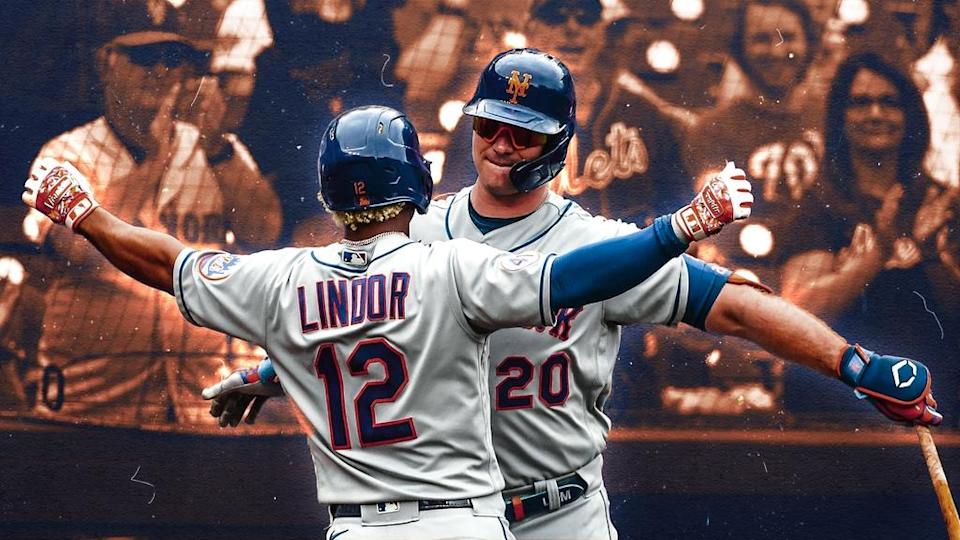
Spending quality time this month at Mets camp, and speaking to the right people, I left with a clear idea that the team hasn’t yet made explicit to fans and media.
It’s a game-changer for how we will talk about the club every day this year. Here it goes:
Literally the only non-pitchers who will have a regular position are Francisco Lindor, Pete Alonso, James McCann and Tomas Nido.
And while Brandon Nimmo will receive significant at-bats at leadoff, he won’t be the so-called “leadoff guy” in the way we understood, say, Rickey Henderson, Johnny Damon or Jose Reyes. Every position in the batting order will be subject to frequent change.
As baseball fans, we are accustomed to one form of questioning and criticizing a manager every afternoon. Is so-and-so in the lineup, and why or why not? Who is your everyday second baseman? Who is your three-hitter?
Simply put, the Mets no longer frame it that way.
This has been evident in the discussions this week over Nimmo and Starling Marte, in terms of who will be the team’s center fielder and who will bat leadoff. The answer: Both will do both. If we’re looking for a more permanent answer, we’ll be waiting until October and beyond.
In implementing this philosophy, general manager Billy Eppler and his staff are not exactly out on a limb. The Tampa Bay Rays have long been famous for day-to-day flexibility, and they are not alone.
Let’s take a look at the 2021 San Francisco Giants under GM Farhan Zaidi, who won a franchise-record 107 games. For that team:
Some of this was a result of injury, notably with first base and Brandon Belt. But the overall style was intentional. In the modern game, teams that consider themselves cutting edge don’t have a single person set at a position.
For the Mets, the only expectations are Lindor, because he plays so well at short; Alonso, because he is not versatile defensively; and the catchers, because they are catchers. And for that matter we probably shouldn’t be shocked if McCann pops up at first base one day.
This is a radical change, and one that comes with potential drawbacks. Many players like to know their roles, prefer to focus on one position, and think of their position in the batting order as fixed. These are all reasonable opinions. But anyone who plays for the Mets will have to get used to a more contemporary approach.
This will also challenge how we in the media discuss the team and frame our questions to manager Buck Showalter. For example, “Is Marte your right fielder?” is one to which the most concrete answer can only be “yes, for today.”
As for the batting order, the Mets do plan to use Nimmo at the top on a regular basis, because of his elite ability to reach base. But they will also be flexible based on factors such as whether the opposing team is using an opener and the general handedness of the bullpen.
It’s worth taking a moment to reflect on how dramatically the sport has changed over the past decade. My first full-time beat job was covering the 2009 Phillies. The lineup was a perfect example of what we had seen for decades.
Jimmy Rollins led off (fast and talented, but not the best on-base skills on the team). Shane Victorino batted second, a spot now often reserved for the Mike Trouts of the world. Chase Utley batted third, the spot once reserved for the team’s best overall hitter. Ryan Howard batted fourth, because he was the big slugger.
During spring training of that year, the fifth spot in the order was a major talking point: Would it be Jayson Werth or Raul Ibanez?
In 2022, teams like the Mets would consider that question a waste of time. Front offices now believe that as long as the best hitters are near the top of an order, lineup construction does not have a significant impact on run production.
We could talk for hours over the pros and cons of these changes. I’m not here to express an opinion.
I’m just here to tell you to be ready for a completely different set of daily discussions around the Mets than what we’ve ever known before.
